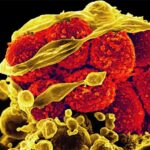 Alzheimers is a slowly progressive degenerative process of the brain, usually beginning after the age of 65 and becoming progressively more common with age. The disease is characterized by the loss of previous acquired cognitive functions causing a marked loss of recent memory as the hallmark symptom. This slowly progressive disorder leads to loss of executive functioning (planning and sequencing abilities, insight and judgment), language skills, visual perceptual skills and finally, almost all brain functions are lost. This process usually takes years to develop. Ultimately the patient is left in a profound vegetative state.
Alzheimers is a slowly progressive degenerative process of the brain, usually beginning after the age of 65 and becoming progressively more common with age. The disease is characterized by the loss of previous acquired cognitive functions causing a marked loss of recent memory as the hallmark symptom. This slowly progressive disorder leads to loss of executive functioning (planning and sequencing abilities, insight and judgment), language skills, visual perceptual skills and finally, almost all brain functions are lost. This process usually takes years to develop. Ultimately the patient is left in a profound vegetative state.
In order to understand the extent of the problem, we need to first understand the worlds aging population statistics. The 65 year old plus population in America is larger than the entire population of Canada. Two-thirds of all the people in the entire history of the world who have survived to the age of 65 years are still alive today. The fastest growing population segment in America is the 85-year old group. Today there are approximately 5 ½ million patients with Alzheimers disease in America. By 2010 there will be one-half million patients per year. By 2050 that number will reach one million new patients per year. Globally, there are approximately 26 ½ million patients with Alzheimers disease that is roughly 1 in 8! Every 71 seconds today, someone in America develops Alzheimers disease! The hopeful news however, is that by delaying the onset of Alzheimers disease by just 1 year, would result in 200,000 fewer cases during the next 10 years.
Risk Factors for the Development of Alzheimers Disease
The first four risk factors basically are not controllable. The greatest risk for the development of Alzheimers disease is age. Ten percent of persons aged 65 have Alzheimers disease. That number increases to almost 50% at 85 years. Gender also is a risk factor and that risk falls on females slightly greater than males. This variant probably relates to the phenomena of females outliving males. African Americans and Latinos have the greatest risk factor as far as race is concerned. Genetics or hereditary Alzheimers disease is very uncommon. Only 5% or less patients have the hereditary form of Alzheimers disease. The hereditary Alzheimers disease is usually early onset and usually begins in the patients late 50s. It has also been statistically suggested that persons that have a first order relative, (brother, sister, mother, father) with Alzheimers disease have a 5 to 6 times increased risk of developing the disorder.
Somewhat controllable risk factors are obesity, Type- II diabetes, heart disease, stroke, and hypertension. These medical problems encourage development of Alzheimers disease earlier that what would have taken place “naturally”. Additional risk factors are low education achievement and low socioeconomic status.
Can Alzheimers be prevented?
Probably Alzheimers disease cannot be prevented, at least at present. The disorder can however be postponed by controlling our diet, exercise profile, medical risk factors and continuing to “exercise” our brain. The best diet to follow for the prevention of Alzheimers disease is a Mediterranean diet. This diet consists of consuming red meat only a few times a month. Sweets, eggs, poultry, and fish can be consumed a few times a week. Finally yogurt, cheese, olive oil, vegetables, beans, nuts, fruit and berries, whole grain bread, pasta, rice, couscous, potatoes, can be consumed daily.
Active exercise could include running, jogging, golf, senior sports, and walking. A brisk walk every other day for 30 minutes is excellent exercise. Of all physical exercise, dancing seems to offer the greatest prevention. This probably is accounted for not only the exercise itself but the musical enlightenment as well as the social interaction. Medical conditions such as heart disease, hypertension, obesity and Type II diabetes may require medically managed pharmaceutical interventions, but as mentioned above, are definite risk factors that can be adjusted.
The last controllable risk factor is the brain exercises. It is important to learn something new each day of the week. This could be learning a poem, new words, new language or even a new way to drive home. Playing board games, crossword puzzles, reading, playing a musical instrument all add to brain exercise.
Treatment
At present there is no cure for Alzheimers disease. There is no treatment that stops the slow progression of Alzheimers disease. There are however, four commercially available medications: Aricept, Exelon, Razadyne and Namenda. At best these medications are only marginally effective by slowing down the progression of Alzheimers disease. Extensive research is presently underway, hoping to find some type of treatment that will stop or reverse the progression of Alzheimers disease. The cure for Alzheimers disease is probably much more allusive however.
Although the future for Alzheimers disease seems worrisome from the epidemic proportion of patients predicted to suffer from Alzheimers disease, we can continue to attempt to postpone the onset and rest assure that a better treatment is one the horizon. A cure may never come for Alzheimers disease, but the disorder can be postponed and this will result in the substantial reduction in the number of patients developing this mind stealing disorder in the future.
Post Views: 1,017
 Alzheimers is a slowly progressive degenerative process of the brain, usually beginning after the age of 65 and becoming progressively more common with age. The disease is characterized by the loss of previous acquired cognitive functions causing a marked loss of recent memory as the hallmark symptom. This slowly progressive disorder leads to loss of executive functioning (planning and sequencing abilities, insight and judgment), language skills, visual perceptual skills and finally, almost all brain functions are lost. This process usually takes years to develop. Ultimately the patient is left in a profound vegetative state.
Alzheimers is a slowly progressive degenerative process of the brain, usually beginning after the age of 65 and becoming progressively more common with age. The disease is characterized by the loss of previous acquired cognitive functions causing a marked loss of recent memory as the hallmark symptom. This slowly progressive disorder leads to loss of executive functioning (planning and sequencing abilities, insight and judgment), language skills, visual perceptual skills and finally, almost all brain functions are lost. This process usually takes years to develop. Ultimately the patient is left in a profound vegetative state. 

























